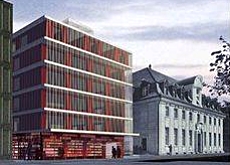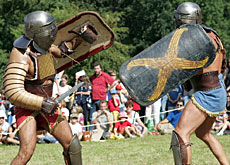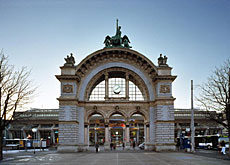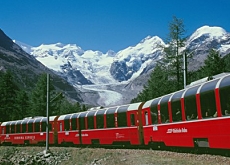Monuments open for European Heritage Days

Art historian Cordula Kessler tells swissinfo that this year's European Heritage Days in Switzerland are devoted to the "old and new" in buildings.
As Switzerland opens the doors of more than 200 Swiss monuments to the public this weekend, she explains why the preservation of history in old buildings has become a topical issue.
Launched on the initiative of the French in 1984, the idea of opening historical monuments to the public was taken up in 1991 by the European Parliament and became European Heritage Days.
Dedicated to monuments and their preservation, they aim to heighten public awareness in protecting cultural heritage.
A continent-wide initiative, European Heritage Days invite the public one weekend each September to visit normally inaccessible historical monuments and cultural assets.
The event has been celebrated in Switzerland since 1994.
swissinfo: This year’s festivities are taking place under the motto “before-after: to protect, transform and maintain buildings in their historical context” . Why was this theme chosen?
Cordula Kessler: Because in recent years the number of building projects involving existing buildings has steadily increased. In Switzerland such projects now account for about 60 per cent of all construction.
Another reason is that this theme is currently being vigorously debated in architectural periodicals, conferences and books. Transforming and renovating existing buildings has replaced the new-construction euphoria of the post-war years.
This development can be traced back to rapid and deep structural changes that have taken place in agriculture and industry. There are now many disused industrial buildings and sites, and people are asking themselves what should be done with them.
The transition to a services economy [in Switzerland] has made the renovation of existing buildings more topical and relevant.
For a long time, architects looked at renovation and transformation as a kind of punishment. Today, many of them find it exciting. They say the friction between the old and the new gives them architectural guidelines. The new object that emerges is more charming than something totally new and makes a stronger statement.
swissinfo: What is the goal of European Heritage Days?
C.K.: It’s the largest awareness campaign in the field of cultural preservation efforts.
It is far more established in France and in the Benelux countries than in Switzerland. The idea of opening monuments to the public on special days originated in these countries.
swissinfo: How do Switzerland’s preservation efforts compare with other European countries?
C.K.: In the 1970s and 1980s Switzerland played a leading role in historical monument preservation, not least due to the fact that Switzerland, unlike Germany, France, and Austria, did not have the problem of rebuilding after the Second World War. That gave Switzerland more freedom to develop approaches to preservation.
swissinfo: There have so far been 11 European Heritage Days. Have they had an effect?
C.K.: There’s still a lot of work to do in terms of building it up. In the beginning we had about 25,000 visitors but in recent years that’s climbed to about 70,000 – a really good result. But it always also depends on the theme of the event and the weather.
Many people are very involved in the European Heritage Days. They contact us regularly, order brochures, and give us plenty of positive feedback. A few even donate money to us voluntarily, which always amazes us. We are naturally thrilled about this.
swissinfo: Are some cantons particularly active in European Heritage Days?
C.K.: We’ve noticed that the French-speaking areas are more active than other regions. For example, the cantons of Geneva and Vaud actually hired staff to organise the festivities and even made money available.
French-speaking Switzerland is probably more strongly influenced by France, where European Heritage Days is well established.
European Heritage Days is always an enormous celebration in French-speaking Switzerland. Everyone’s there and takes an active role, from the housewife who bakes cakes to the vintner who sells his wine at a stand.
swissinfo: Where are you going this weekend?
C.K.: I’m going to look at the 17th-century farmhouse in Noville, canton Vaud, which was renovated by architects Doris Wälchli and Uli Braun. I’m excited to see what they made out of the ruined building that once stood there.
European Heritage Days are taking place this year on September 10 and 11.
It is the 12th time the event is being celebrated in Switzerland.
The motto is “before-after: to protect, transform and maintain buildings in their historical context”.
At about 100 different locations the public can enjoy up to 200 different tours, exhibitions and films.
Cordula Kessler is project director of NIKE, a nationwide cultural preservation centre that is coordinating European Heritage Days in Switzerland.
(Adapted from German by Kathleen Peters)

In compliance with the JTI standards
More: SWI swissinfo.ch certified by the Journalism Trust Initiative



You can find an overview of ongoing debates with our journalists here. Please join us!
If you want to start a conversation about a topic raised in this article or want to report factual errors, email us at english@swissinfo.ch.